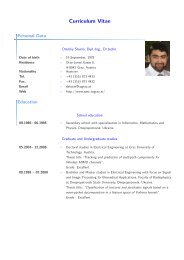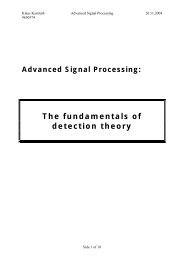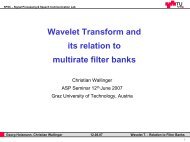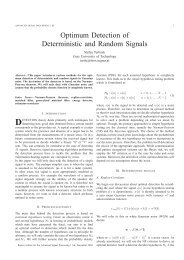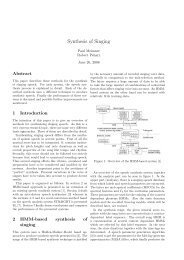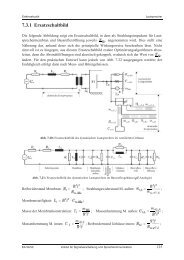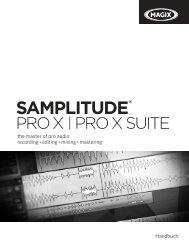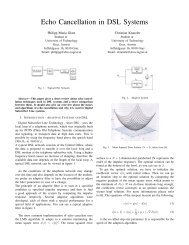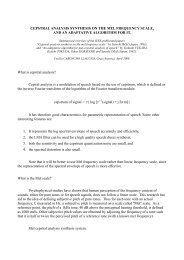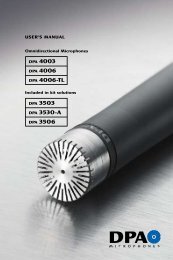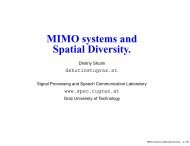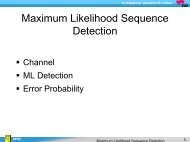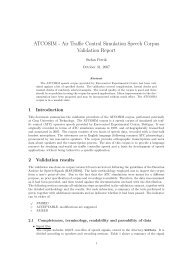Contents - SPSC - Graz University of Technology
Contents - SPSC - Graz University of Technology
Contents - SPSC - Graz University of Technology
Create successful ePaper yourself
Turn your PDF publications into a flip-book with our unique Google optimized e-Paper software.
Gregor Pirker, Michael Wohlmayr, Stefan Petrik, Franz Pernkopf PTDB-TUG<br />
1 Introduction<br />
A pitch tracking algorithm usually estimates the pitch or the fundamental frequency <strong>of</strong> human<br />
speech or music signals. The Signal Processing and Speech Communication (<strong>SPSC</strong>) Laboratory<br />
at <strong>Graz</strong> <strong>University</strong> <strong>of</strong> <strong>Technology</strong> developed such an algorithm for multiple speakers talking<br />
simultaneously [4] [5]. In the course <strong>of</strong> advancement this multi pitch tracker had to be evaluated<br />
and compared to similar algorithms by means <strong>of</strong> proper speech data. In order to achieve<br />
both, sufficient speaker dependent and speaker independent modelling, this data had to meet<br />
the following requirements:<br />
• a substantial amount <strong>of</strong> speech data composed <strong>of</strong> phonetically rich sentences that allows<br />
for meaningful training <strong>of</strong> speaker-dependent models and<br />
• a variety <strong>of</strong> female and male speakers such that a multi-pitch tracker can be evaluated<br />
seriously.<br />
Since no existing database fulfilled our requirements, it was a consequent step to produce the<br />
PTDB-TUG (Pitch Tracking Database from <strong>Graz</strong> <strong>University</strong> <strong>of</strong> <strong>Technology</strong>). This database is<br />
provided on the website <strong>of</strong> the <strong>SPSC</strong> Laboratory at <strong>Graz</strong> <strong>University</strong> <strong>of</strong> <strong>Technology</strong> for research<br />
purposes in the area <strong>of</strong> speech analysis and pitch tracking. Evaluation results <strong>of</strong> the multi<br />
pitch tracker can be found in [7]. The PTDB-TUG includes signals recorded from microphone,<br />
which are supposed to be the data for algorithm testing. One can use either the provided<br />
reference signals or extract own ground truth data from the laryngograph signals if desired. At<br />
the beginning <strong>of</strong> this report the specifications <strong>of</strong> the final speech corpus are introduced. After<br />
that a closer look is taken to the pr<strong>of</strong>iles <strong>of</strong> the participants as well as to the spoken content,<br />
which was taken from [2]. The further sections deal with the collection <strong>of</strong> the microphone<br />
and laryngograph data and with the required post processing steps, which primarily means the<br />
extraction <strong>of</strong> the reference pitch signals. In the end an overview <strong>of</strong> the corpus structure and<br />
its terminology is provided. The whole database production process was carried out following<br />
mainly the suggestions from [1].<br />
Rev.: alpha 1.1 DRAFT, August 22, 2012 – 4 –




